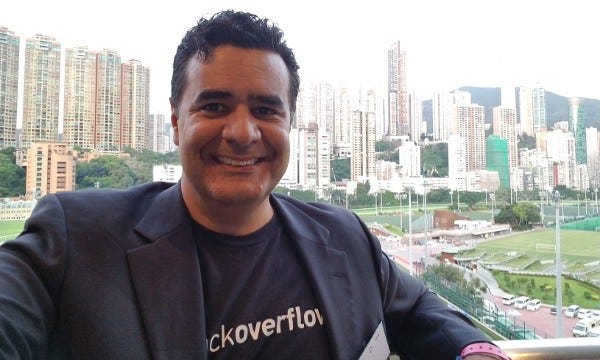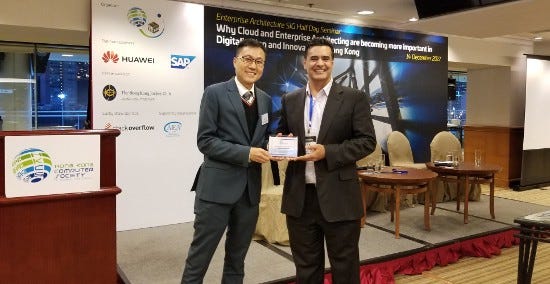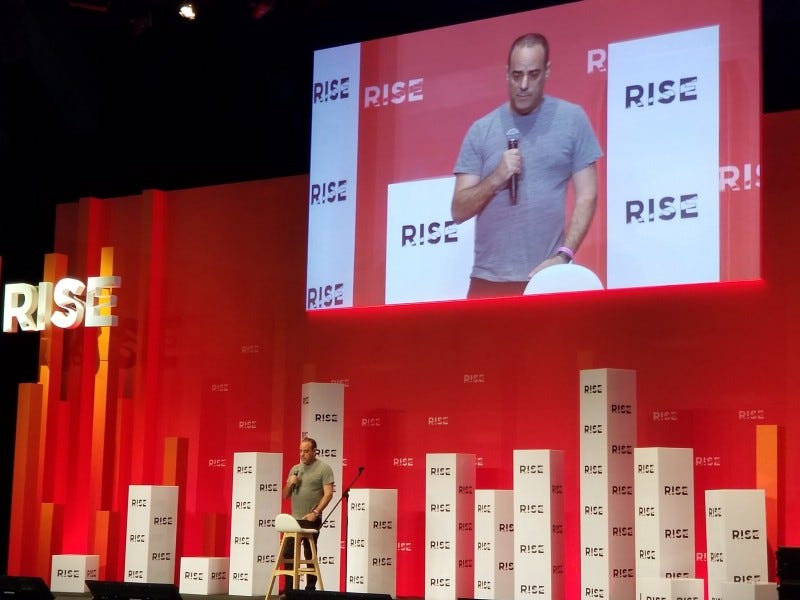How to Launch New Global Markets
The past couple of weeks I have been in Hong Kong and Singapore. While I did get to meet the Enterprise Sales Forum chapters, the real…
The past couple of weeks I have been in Hong Kong and Singapore. While I did get to meet the Enterprise Sales Forum chapters, the real purpose for the trip was to represent Stack Overflow and make deals happen.

Me being super awesome at the Hong Kong Jockey Club for an event
A year ago, the farthest thing on my mind was coming out to Asia to strike deals. Stack Overflow has no office out there, had no plans to open one up, and our revenue from the region was tiny. Besides there are plenty of other opportunities much closer to home.
But last August, I was going to be in the region for three weeks on a family trip. I already had one meeting in Tokyo setup to support a deal back in the US, but I started to think whether I could really do business in this region.

Is it really worth the effort though? What companies are out there, who was I going to target, do we have any sort of presence in Asia Pacific (APAC)? Luckily, Stack Overflow is one of the most popular websites globally. For those not familiar, it is a Q&A community for developers that gets over 50 million unique users per month and holds the largest repository of coding knowledge in the world. When I analyzed the data, I realized that APAC has the largest percentage of users, a shade ahead of North America. Also, every major multinational company has a large (and growing) presence in the region, so I would have familiar companies to engage and build relationships.
How was I going to do this half a world away though, with no current relationships and little understanding of the companies, market, or business culture?

What I realized is that opening up new markets is not all that different to starting out in a new company and new territory, so I relied upon a similar playbook that has served me well in so many other situations. It comes down to drive, strategy and rigorous process, and I lay out this strategy in nine steps.
First, I needed credibility. It helps that Stack Overflow has a known brand. But I needed to elevate my “thought leadership” credentials so that I would come with something to useful to offer other than a sales pitch. Luckily I had already started my blog and newsletter focus on developer culture, team productivity, and digital transformation.
Second, I needed targets. I already had a clear idea of my ideal account profile and prospect personas. So I searched on LinkedIn for profiles that worked at companies with 10K or more employees and were CIO or CTO level contacts. After narrowing down the list to contacts within the proper account profile, I had a solid list of 100 targeted contacts.
Third, I needed connections. I used both LinkedIn and email, sending both a personalized LinkedIn connection request and a personalized email based on what I found out about the person. The messages were very short and concise, stating I was visiting, that I was curious about the state of digital transformation in the region, and requesting a meeting. The messaging works as it plays on intrigue. The story is I am coming a great distance and I am asking for their expertise.
Fourth, I needed relationships. Asia is very much a relationship oriented culture. I had good luck with the LinkedIn connections, but few takers on my offer to meet. That is not surprising, but I did have a handful of positive responses. I jumped on these chances and rearranged my schedule, even meeting one executive at the airport before he headed back to Paris for a few weeks.
Fifth, I needed influence. The August trip was an interesting experiment, but I had only gotten surface level. I needed a much deeper network to generate referrals. I found a local event by a well-established organization to sponsor for the price of one iPad. I made plans to attend the December event and then marketed the event to my original list of 100 contacts. I did not get many takers on the event, but I did snag a few more one-on-one meetings and made good connections with senior IT professionals at the event itself.
Sixth, I needed proof. With the event in bag, I created a blog post with my findings about the Hong Kong developer market with photos from the event. I then emailed this post and image to my list of 100 contacts, which generated positive responses from people that had not previously engaged.

Getting an awesome plaque for being a sponsor…I like plaques!
Seventh, I needed momentum. The CTO that I met at the airport finally got back with interest! Given the size of the deal and other good conversations with other contacts, I had confidence to plan a March trip. I expanded my list of contacts to over 200 (while not reducing relevancy or seniority) and booked 25 meetings in five days. How? I now had useful content to share and existing connections on LinkedIn to senior executives to create a referral base.
Eighth, I needed results. By May, I had closed one deal and had a few other deals emerge in Singapore using the same process I shared above. Sales is a long game however, so the focus is not to close the deal as fast as possible, it is to nurture trusted relationships, build an internal coalition, and learn everything I can about the organization to ensure I can secure an agreement without any surprises since I would not be able to control the on-the-ground situation being so far away.
Ninth, I needed awareness. With momentum and the fruits of some early results, it was time to make a bigger splash. The opportunity came with the RISE Conference, and with a few nudges, I was able to bring my CEO out as a main stage speaker. With real start power, I could amplify the value I could provide my executive contacts and arrange executive sessions outside of RISE.

Our CEO speaking on the main stage of RISE 2018 in Hong Kong
Normally there are ten steps, isn’t that how it works? But there is no tenth step as the journey is still continuing. What is important is that with drive, a strategy, and a rigorous process, you can open up any market, even one that is half-way around the world. It is a hell of a lot of work, success is woefully hard to come by in the early stages, but people do it all the time. And you can do it as well.
If you found this essay personally helpful, I encourage you to sign up for the weekly Enterprise Sales Forum Newsletter where I share my thoughts on the state of B2B sales, practical tips for improving your sales acumen, and upcoming sales talks across the global Enterprise Sales Forum community.



